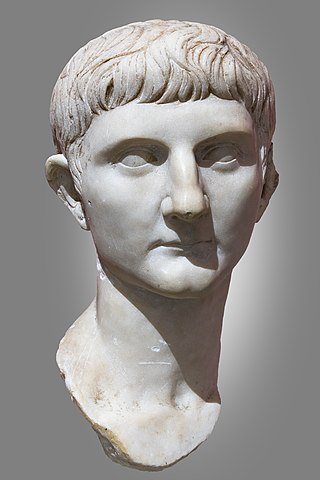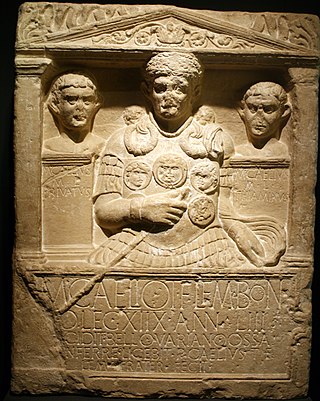This article includes a list of general references, but it lacks sufficient corresponding inline citations .(August 2018) |
This article includes a list of general references, but it lacks sufficient corresponding inline citations .(August 2018) |
The only source on Mallovendus is the Annals by Roman historian Tacitus. The Marsi were part of the coalition which under Arminius had rebelled against Roman rule and defeated the Romans at the Battle of the Teutoburg Forest in 9 AD. By 11 AD, the Marsi were suffering from retaliatory measures from the Romans. After this time, Mallovendus is referred to as the chieftain of the Marsi. In the fall of 14 AD, Roman general Germanicus massacred the Marsi and destroyed their temple to the goddess Tamfana. Mallovendus appeared to have survived this massacre. In 15/16 AD he submitted to the Romans, although part of his tribe continued to resist Germanicus. In the fall of 16 AD, he told Germanicus the hiding place for one of the eagles captured by Arminius at the Battle of the Teutoburg Forest. Mallovendus subsequently disappears from the historical record. He is not mentioned among the prisoners that were part of the triumph of Germanicus in 17 AD.

Germanicus Julius Caesar was an ancient Roman general and politician most famously known for his campaigns in Germania. The son of Nero Claudius Drusus and Antonia the Younger, Germanicus was born into an influential branch of the patrician gens Claudia. The agnomen Germanicus was added to his full name in 9 BC when it was posthumously awarded to his father in honor of his victories in Germania. In AD 4 he was adopted by his paternal uncle Tiberius, who succeeded Augustus as Roman emperor a decade later. As a result, Germanicus became an official member of the gens Julia, another prominent family, to which he was related on his mother's side. His connection to the Julii Caesares was further consolidated through a marriage between him and Agrippina the Elder, a granddaughter of Augustus. He was also the father of Caligula, the maternal grandfather of Nero, and the older brother of Claudius.
Maroboduus was a king of the Marcomanni, who were a Germanic Suebian people. He spent part of his youth in Rome, and returning, found his people under pressure from invasions by the Roman empire between the Rhine and Elbe. He led them into the forests of Bohemia, near to the Quadi who already lived nearby, and established a large alliance.

The Battle of the Teutoburg Forest, described as the Varian Disaster by Roman historians, took place at modern Kalkriese from September 8–11, 9 AD, when an alliance of Germanic peoples ambushed Roman legions and their auxiliaries, led by Publius Quinctilius Varus. The alliance was led by Arminius, a Germanic officer of Varus's auxilia. Arminius had acquired Roman citizenship and had received a Roman military education, which enabled him to deceive the Roman commander methodically and anticipate the Roman army's tactical responses.

Arminius was a chieftain of the Germanic Cherusci tribe who is best known for commanding an alliance of Germanic tribes at the Battle of the Teutoburg Forest in 9 AD, in which three Roman legions under the command of general Publius Quinctilius Varus were destroyed. His victory at Teutoburg Forest would precipitate the Roman Empire's permanent strategic withdrawal from Germania Magna. Modern historians have regarded Arminius's victory as one of Rome's greatest defeats. As it prevented the Romanization of Germanic peoples east of the Rhine, it has also been considered one of the most decisive battles in history and a turning point in human history.

The Cherusci were a Germanic tribe that inhabited parts of the plains and forests of northwestern Germany in the area of the Weser River and present-day Hanover during the first centuries BC and AD. Roman sources reported they considered themselves kin with other Irmino tribes and claimed common descent from an ancestor called Mannus. During the early Roman Empire under Augustus, the Cherusci first served as allies of Rome and sent sons of their chieftains to receive Roman education and serve in the Roman army as auxiliaries. The Cherusci leader Arminius led a confederation of tribes in the ambush that destroyed three Roman legions in the Teutoburg Forest in AD 9. He was subsequently kept from further damaging Rome by disputes with the Marcomanni and reprisal attacks led by Germanicus. After rebel Cherusci killed Arminius in AD 21, infighting among the royal family led to the highly Romanized line of his brother Flavus coming to power. Following their defeat by the Chatti around AD 88, the Cherusci do not appear in further accounts of the German tribes, apparently being absorbed into the late classical groups such as the Saxons, Thuringians, Franks, Bavarians, and Allemanni.

Germania, also called Magna Germania, Germania Libera, or Germanic Barbaricum to distinguish it from the Roman province of the same name, was a historical region in north-central Europe during the Roman era, which was associated by Roman authors with the Germanic peoples. The region stretched roughly from the Middle and Lower Rhine in the west to the Vistula in the east. It also extended as far south as the Upper and Middle Danube and Pannonia, and to the known parts of Scandinavia in the north. Archaeologically, these peoples correspond roughly to the Roman Iron Age of those regions. While apparently dominated by Germanic peoples, Magna Germania was also inhabited by other Indo-European peoples.

The Battle of the Weser River, sometimes known as the First Battle of Minden or Battle of Idistaviso, was fought in 16 AD between Roman legions commanded by Roman Emperor Tiberius's heir and adopted son, Germanicus, and an alliance of Germanic peoples, commanded by Arminius. The battle marked the end of a three-year series of campaigns by Germanicus in Germania.

The Sicambri, also known as the Sugambri or Sicambrians, were a Germanic people who during Roman times lived on the east bank of the river Rhine, in what is now Germany, near the border with the Netherlands. They were first reported by Julius Caesar, who described them as Germanic (Germani), though he did not necessarily define this in terms of language.
Segestes was a nobleman of the Germanic tribe of the Cherusci involved in the events surrounding the Roman attempts to conquer northern Germany during the reign of Roman Emperor Augustus.

The Marsi were a small Germanic tribe settled between the Rhine, Ruhr and Lippe rivers in northwest Germany. It has been suggested that they were a part of the Sugambri who managed to stay east of the Rhine after most Sugambri had been moved from this area. Strabo describes the Marsi as an example of a Germanic tribe who were originally from the Rhine area, now the war-torn Roman frontier, but had migrated deep into Germania.

Thusnelda was a Germanic Cheruscan noblewoman who was captured by the Roman general Germanicus during his invasion of Germania. She was the wife of Arminius. Tacitus and Strabo cite her capture as evidence of both the firmness and restraint of Roman arms.

The Angrivarii were a Germanic people of the early Roman Empire, who lived in what is now northwest Germany near the middle of the Weser river. They were mentioned by the Roman authors Tacitus and Ptolemy.
Aulus Caecina Severus was a Roman politician and general who was consul in 1 BC. He was Emperor Augustus' representative in Moesia when the Great Illyrian Revolt broke out. As a result, he spent 4 years in heavy fighting against the Illyrian tribes before the revolt was suppressed by the Romans. In 14 AD he was in charge of several legions on the lower Rhine which mutinied on the death of Augustus. He was recorded as having handled this poorly, with the situation only being salvaged by the intervention of his commander-in-chief, Germanicus.
Inguiomer or Ingomar was a leader of the Cherusci. He is chiefly remembered as the uncle of Arminius.
The Latin name Abnoba Mons is the name of a mountain range that was already known to ancient authors Pliny and Tacitus. The name has been traditionally, primarily associated in historical research with the Black Forest. Ptolemy used the toponym in his A.D. 150 publication, Geographia, as a mountain range lying within Germania magna (ὄρη) with its southern extent at 31° 49' and its northern extremity at 31° 52'. The geographer clearly did not restrict this name to present day Black Forest, but to an entire mountain chain.
The Gambrivii were a Germanic tribe. They are first mentioned by Strabo in Geographica as the Gamabrivii. He writes that they were connected to the Chatti, the Chattuari and the Cherusci. This means that they probably lived near the Weser.
Italicus was a chieftain of the Germanic Cherusci. He is chiefly remembered as the nephew of Arminius.
Segimer or Sigimer was a chieftain of the Germanic Cherusci tribe. He is chiefly remembered as the father of Arminius, who led the Germans to victory over the Romans at Teutoburg Forest in AD 9.
Julius Segimundus was a nobleman of the Germanic Cherusci.
The Battle of the Angrivarian Wall was fought near Porta Westfalica, Germany in 16 AD between the Roman general Germanicus and an alliance of Germanic tribes commanded by Arminius. This battle followed immediately after the Battle of Idistaviso, and was supposedly sparked by Germanic outrage over the trophy erected on that prior battlefield by the Romans.